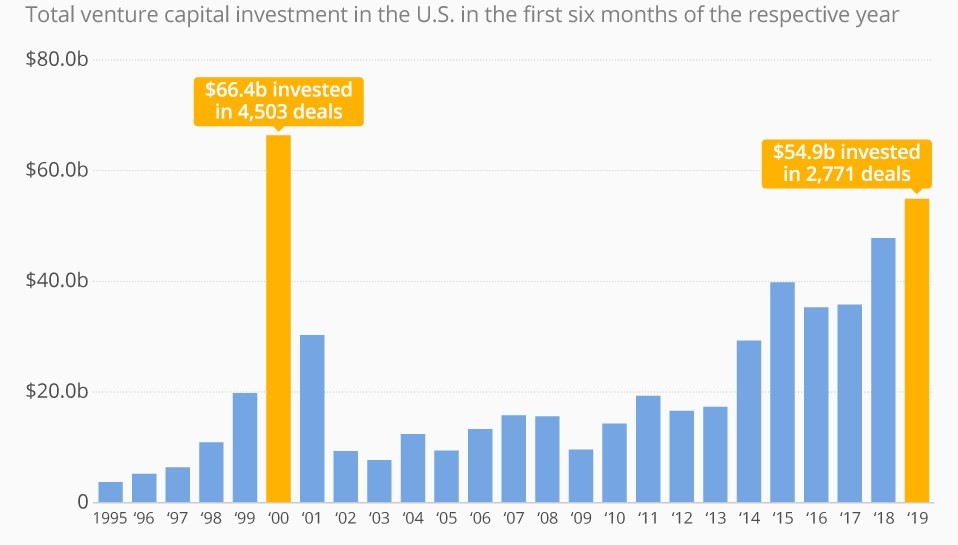Launching a startup involves several required actions. Many aspiring businessmen think that a unique selling proposition is enough, but the success of a new brand depends on many factors that are important to work out before starting. About this - our article!
5 Steps on How to Launch A Tech Startup Company
Key Points.
A technology startup is much more interesting (and more complicated) than a traditional business. You become not just an entrepreneur, but a messiah that brings the righteous light of technology into this world.
So what do you need to know about a tech startup?
- 01
Trend idea. It starts with a trend idea, the foundation of any business. If you come up with and then offer a real product that has no analogs - success is guaranteed. The easiest option: take something gray and boring from everyday life, digitize it, pack it nicely and - the startup is ready. For example, there is the most ordinary greenhouse with cucumbers - we equip it with sensors of temperature, humidity, etc., automate the supply of fertilizers and we get a technological eco, bio, green project.
- 02
A workable team. The idea needs to be started through the involvement of high-quality specialists (developers, designers, data analytics, tech leads, etc) and the search for investors. Keep in mind that you should not count on quick profits, you need enthusiasts who are ready to work “for an idea” first.
- 03
Starting capital. It is impossible without a financial component. Typically, start-up entrepreneurs attract third-party investments, but there are often cases when they are ready to invest their capital, not just knowledge.
Testing phase.
Launching a startup to implement a project is impossible without testing. If there is no money and a large team of performers (maximum, cofounders), but a lot of enthusiasm, the main thing is to come up with a working model of the company. The process of verifying the viability of an idea always involves polishing it.
We recommend starting with a survey of the target audience. Its purpose is to find out the potential interest in the product. Also, do a competitor analysis. This data will then become the basis of the business plan.
Next is the direct testing of the product/service. It is important to make an objective conclusion, assessing the willingness of consumers to give money for the product. As part of this action, the market is also studied, the basic concept of the future company is drawn up, the portrait of a potential client is necessarily “drawn”.
Testing ideas should not be postponed until the advent of the marketing department since there is a great risk of offering a product to a non-target audience, which means failing.
Search for investors.
So, a good idea was created, a development plan was developed, a test was conducted on how efficient the startup is - what else is needed to create it? Lack of funding is the reason for the collapse of about 30% of start-ups. American researchers at CB Insights argue that it is the lack of material resources that ranks second in the ranking of failures of “young” brands (by the way, in the first place is a bad idea).
How to get an investment? Let's look at the list of proven methods from the Forbes publication:
- 3 “F” - stands for family, friends & fools (look for money from relatives, friends and ... fools)
- state subsidies - newcomers have a chance to receive grants, but for this, it is necessary to prove the viability of a novice brand not only on paper but also by the presence of their tangible assets
- business angels are rich people who want to invest in a young brand
- competition events — a good chance to get not only investments but also PR (it is convenient to test the effectiveness of the idea at the competition)
- venture capital funds - a prerequisite for obtaining investments from venture capital funds is the real practical implementation of the idea (today special attention is paid to IT projects)
- investors of the “last stages” are often large corporations ready to provide financial resources when certain stability of the business is noticeable

Crowdfunding is also worth adding to the Forbes list, which is also an interesting way to get a share of investments. There are crowdfunding platforms where everyone can submit their own project, receive (or not receive) funds for its implementation.

MVP (Prototype development).
Listing what you need for a startup, you can’t forget about the prototype - it is working, but not the final version of the product/service.
Minimum viable product is the most common for tech startups. MVP is a minimally viable product that allows you to receive meaningful feedback from users, to understand what they need and not to create products they are not interested in and for which they aren’t willing to pay.
Final stages.
These stages are called in the tech world - alpha and beta versions. The first involves final testing with the possibility of improvements. In parallel, begin to form a customer base. The final alpha version is an announcement of the release of product/service on the market.
The goal of the beta version is to bring the product closer to the final version. Given the criticism of early consumers, consider improving work efficiency.
The conclusion of the stage is the launch of the finished product, here you can still refine the flaws, make amendments if necessary. In parallel, think about the dynamics of sales.
Launch! Hooray! You have started.
Experienced entrepreneurs claim that the height of the “take-off” of the brand is determined by the further efforts of its founders. The first results may seem minimal, insufficient, but corporations like Apple or Amazon did not start immediately with multimillion-dollar sales.
All that is required is to adequately assess one’s own forces, finalize the strategy, properly manage investments, and forecast development according to growth rates.
So, we examined the topic of how to launch a startup - now you have a consistent plan in front of you that you can follow. Remember, each brand develops individually. Customize the scheme for your business using modern methods of promotion. Go for it!





















